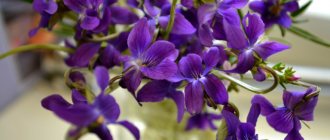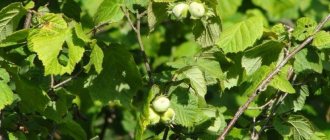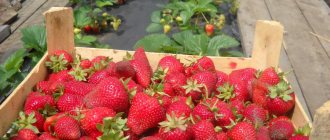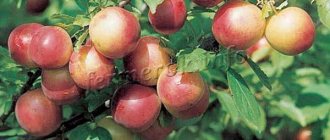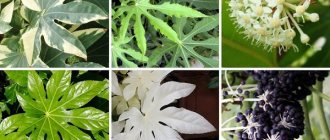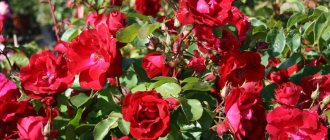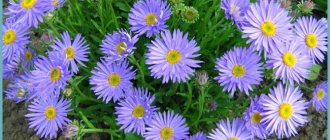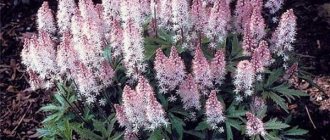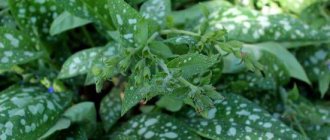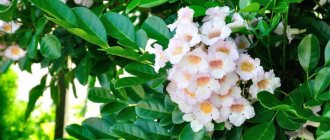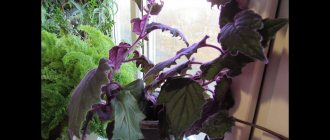New Belgian aster, the best varieties
When choosing a New Belgian aster variety for the garden, we think not only about the characteristics of growth and care, but also about the flowering time.
You should not use the latest hybrids, as they may not have time to bloom, especially if the climate is average or cold. The most popular among gardeners are:
- Planty is a branched, tall (up to 1 meter) aster that fits equally well into the garden landscape and is suitable for use in flower arrangements. Also, its pink flowers are cut for interior bouquets;
- Ballard - choose Marie, Patricia, Rut, Sarah - asters of this variety grow up to 1 meter and, depending on the variety, the flower rosettes are painted in different colors;
- Royal Blue - as the name suggests, has flowers of a rich blue color. It looks equally good planted on its own or in company with other ornamental plants.
- Saturn - has one of the most impressive sizes and reaches a height of one and a half meters. Compared to the overall size of the bush, the diameter of each inflorescence is not so large and is only 3-4 cm, but during the flowering period flower baskets completely dot it. Just imagine how beautiful it is!
New Belgian aster, the best varieties
The most beautiful varieties and varieties
For many decades, breeders have been working to develop the best varieties of New Belgian aster. The following varieties are in the popularity rating among gardeners.
Crimson Brocade
One of the most spectacular varieties, invariably popular among Russian gardeners. Its distinctive feature is the bright crimson-scarlet shade of the petals. The contrast is the solar-fiery core of the flower. The diameter of one bud is small - only 3 cm, but this disadvantage is compensated by the abundance of flowers on the bushes. The flowering period of the Crimson Brocade variety lasts about 30 days. The powerful bushes reach a height of 130 cm and are densely covered with glossy dark green foliage.
Starletta mix
Bushes of this variety are distinguished by strong immunity, increased frost resistance and low maintenance requirements. During the flowering period, they are covered with large purple flowers. Starletta mix buds bloom long and profusely. The contrasting accent of the aster is the yellow center with white stamens.
White ladies
White lady bushes grow up to 1 meter in height and are characterized by good winter hardiness. The flowers are not particularly large, but there are quite a lot of them on the plant. During the flowering period (from September to the end of October), the bush seems to be shrouded in a snow-white haze. The White Lady bush is powerful, so it is often grown without support. Suitable for cutting into bouquets and for garden decoration.
Royal Ruby
A light-loving but winter-hardy plant grows up to 90 cm in height. It is decorated with glossy dark green foliage and crimson flowers. They are semi-double and have a bright yellow center. Flowers 2-3 cm in size open almost simultaneously on the bush. This happens at the beginning of September and lasts more than a month. The bush has a reverse pyramidal shape and is characterized by a high growth rate.
Marie Ballard
The flowers of the Marie Ballard variety are of a soft lilac hue and will delight you with their appearance for about 2 months. They have the longest flowering period among all varieties of New Belgian aster. The height of the bushes does not exceed 95 cm, and the diameter of the flower is 5 cm. The first mention of this variety dates back to 1955, it was then that Ernest Ballard developed a new variety and named it in honor of his beloved wife, Marie.
Sam Benham
One of the most popular varieties with white flowers. The shrub has an oval shape, is quite wide, and reaches a height of 1.5 meters. The straight stems are densely covered with oblong-shaped foliage and a dark green color. Their surface is glossy. Gardeners can observe the first buds on the plant from the first days of September; the flowering period lasts about a month. The flowers have a diameter of 4 cm and a yellow core, which looks like a bright accent against the background of snow-white petals.
Historical facts about aster flowers, morphology of the word aster
In 1728, the Jesuit Father Inkerville, returning to his homeland from China, brought to Paris the seeds of a plant unknown to Europeans - aster. According to the priest, it has long been decorating the gardens of the Chinese. The botanist Antoine Jussier, to whom Inkerville gave the seeds, planted them in the Paris Botanical Garden, and red flowers shaped like stars grew from them that same summer. When Carl Linnaeus created his system of the plant kingdom in 1753, he assigned the entire genus the astronomical name Aster, which means “star” in Latin. And the founders of the genus - beautiful newcomers from the gardens of the East - received the official name “Chinese asters”.
However, this name did not remain with them for long, and they themselves did not remain in the noble family of asters. And again, this could not have happened without astronomy, or rather, without the astronomer - Alexander - Henri - Gabriel Cassini, the last representative of the famous astronomical dynasty, which for more than a century supplied one after another directors of the Paris Observatory. In his youth, he also studied astronomy, then jurisprudence. Subsequently he became an administrator and devoted all his leisure time to botany. He was so successful in researching the Asteraceae family that at one time they wanted to name this family in his honor. In 1826, he isolated a new genus from the Linnaean genus of asters, to which he gave the name Callistephus, which translated from ancient Greek means “beautiful wreath” (this is what the Jesuit Inkerville called flowers brought from China a hundred years before him.
). A little smaller (up to 1.8 m) is the New Belgian, or Virginian, aster with unusually highly branched woody shoots, each of which can bloom up to two hundred baskets-inflorescences, so that because of them the leaves are simply not visible...
The Virginia aster has a powerful root system, and therefore this aster is capable of simultaneously decorating and strengthening the banks of irrigation canals, ponds, and rivers. The beautiful Virginian even engages in such “charity” on her own in the western regions of Ukraine, on the Caucasian coast of the Black Sea and in the republics of Central Asia. The fact is that it (just like other American asters) easily runs wild in its new homeland - of course, if it manages to escape to an area with a suitable climate, where dense aster thickets then form. In the northern regions of the Union, this is impossible: here the seeds of astrinozems do not have time to ripen, although the plants themselves are superior to callistephus in winter hardiness.
In addition, the Virginia aster is an excellent honey plant. During the flowering of one of its varieties - Blue Jewel (the city of Sochi is famous for it, by the way) - bees can be grabbed with your hands without fear of bad consequences: their crop, which is located in the abdominal cavity, is so full of nectar that the abdomen is not able to bend to sting.
Fragrant light honey is also produced by a native of Europe - the salt marsh aster, or flood aster, growing on the Baltic coast, at the mouths of northern and Ukrainian rivers, in the floodplains of the Kuban, and in the Crimea.
Ancient symbolism has come to life in our time. An aster-shaped badge adorned the caps of soldiers of the Hungarian Red Army: this flower served as the emblem of the Hungarian revolution of the nineteenth year. It was worn by poets and writers Dola Iyesh, Antal Gidas, József Fodor, Mate Zalka, later the legendary commander of the International Brigade in Spain.
But symbolic traces of the aster remain not only in the history of Hungary. In the language of this country, the star flower represents autumn and is called “ostiroza”, that is, “autumn rose”...
Many autumn motifs are “woven” with the participation of asters in the poetry of our Motherland: for example, in the poems of Nikolai Aseev, Vladimir Sosyura, or in Vsevolod Rozhdestvensky:
And finally, a little prose, as they say, at the end of the day. In autumn, when there are so few flowering plants, Chinese and perennial asters have no competition: they are beautiful and unpretentious, very diverse in shape and color, can withstand frosts of 5-7 degrees, stand for a long time without fading in a vase with water (some varieties - 18 -19 days), in addition, their cultivation requires much less cost than other autumn flowers.
The use of aster novobelgiya in landscape design
The lush, unusually beautiful flowering of this plant gives a huge variety of options for its use in landscape design. Belgian aster is good both in single plantings and in various compositions.
Plantings that include various varieties of aster of various colors and sizes look very beautiful. This is clearly visible in the photo.
Aster bushes are often planted as hedges, they are used to create garden sculptures, and they can decorate any corner of the garden. Marigolds, cosmos, nasturtium, and zinnia go well with them.
Low-growing varieties are usually planted in pots and used to decorate balconies and terraces. This aster looks great in bouquets. Florists love to create compositions featuring the September flower.
How does Aster Virginian perennial reproduce?
Gardeners more often practice vegetative and bush propagation.
Dividing the bush
Every seven years, Belgian asters are transplanted to a new location to preserve the splendor and decorativeness of the buds. Divide the bush with a knife and immediately remove all suspicious roots. The shoots on the daughter bushes are pruned, the parts are immediately transferred to a new place or placed in a container with water.
The bush division procedure does not take much time
It is important to use clean equipment to avoid fungal infections.
Cuttings
For border planting, plants are propagated by cuttings, cut from bushes older than 5 years. Place in water for rooting. After this, the cutting can be rooted in a new place.
Note! Leave up to 50 cm between plants. Dense plantings are more often affected by pests
Growing perennial asters
All the types of perennial asters I describe are frost-resistant, overwinter well without shelter, and during flowering, many varieties tolerate frosts down to -5 degrees. They grow well in different types of soil, but develop and bloom better in fertile soil with a high content of nutrients. To grow perennial asters, you need to choose sunny, moderately humid places without stagnant water. Then every year they will paint the autumn garden with the bright colors of their inflorescences.
Natural species are grown from seeds; they are usually planted before winter or spring, after stratification for 3-4 weeks in the refrigerator. Seedlings bloom in the second year.
However, varieties that are obtained through complex selection are propagated only vegetatively (by rooted cuttings, by dividing the bush), since their seeds do not convey the acquired decorative qualities. In May, perennial aster can be propagated by cuttings cut from the tops of shoots, and in summer - by stem cuttings with 3-4 nodes. Plant them in a loose substrate and keep them under film, moistening them often. The roots should appear within a month. Then the film can be removed.
Planting of varietal perennial asters is carried out in early May or late August-September. First, humus or compost (3-4 kg per 1 sq. m) is added to the area reserved for asters for digging.
Caring for perennial asters is easy. In autumn, it is advisable to sprinkle the soil around the bushes with compost or humus. In the spring, it is necessary to cut off last year's shoots and feed the bushes with complex mineral fertilizer (30 g per 1 sq. m). On poor soils, perennial aster will bloom better if you feed it during the summer - about once a month - using superphosphate and potassium sulfate (50-60 g per 1 sq. m).
If there has been no rain for a long time, perennial asters should be watered, but only with water heated in the sun. It is also necessary to weed and loosen the soil around the bushes. Preparation for winter comes down to pruning the aboveground part in late autumn. Usually, perennial asters overwinter well and do not need shelter; they only cover the soil around newly planted bushes or weakened plants with leaf litter or a layer of humus.
You can grow perennial asters in one place for a long time, but over time they begin to thin out and the flowers become smaller, so experts advise dividing the plants and replanting them every 3-4 years. The overgrown bush is divided into parts with several shoots and immediately planted in a new place.
Perennial asters are wonderful plants; they look impressive in mixed flower beds: low ones in the foreground and center, tall ones in the background, among tall plants, as well as against the background of a lawn, shrubs, and buildings. They last a long time in a bouquet and are often used by florists in flower arrangements.
Heather aster
Almost all summer residents have asters growing in their flower beds, but groundcover varieties are especially different from their counterparts. Growing and propagating them is not difficult; they easily take root and delight you with their flowering throughout the summer. This material is devoted to planting and caring for heather aster.
Seed method
Seeds are sown immediately into the soil in spring or autumn.
At the beginning of spring, seeds are planted in loosened and nutritious soil to a depth of one and a half centimeters and sprayed generously so that the seed material does not float away with the water.
On top of the crops, the soil must be mulched with a thin layer of compost to retain moisture. During the growth process, sometimes you need to carefully, without touching the sprouts, loosen the soil and remove weeds along with the roots.
The first shoots will appear in a week and a half. After the leaves appear, the sprouts are picked and planted at a distance of 15 cm from each other. With the arrival of autumn, the flowers are transplanted to a permanent place.
In autumn, seeds are planted in frozen soil with depth. Mulch in the form of compost is placed on top of the crops, and sprouts appear in the spring.
When growing from seed, the first flowering will occur only the next season.
You can grow aster at home through seedlings. Before planting, the seeds are soaked in damp gauze and then planted in a container to a depth of 5 mm. The top of the crops is covered with film and put away in a bright and warm place. Periodically it is necessary to open the film for ventilation and watering.
The first shoots appear after seven days and the film is immediately removed. As soon as the third true leaf grows, the seedlings are planted in separate containers.
After 14 days from the moment of diving, the sprouts must be fertilized with complex fertilizers or a mixture of ammonia sulfur (1 g) and water (1 l). After 2 weeks, you need to fertilize again with superphosphate (3 g), potassium sulfate (1.5 g) and ammonium nitrate (1.5 g) per 1 liter of water.
Rhizome division
The plant along with its roots is dug up and divided into parts without damaging the small roots. Then parts of the plant are planted in holes, sprinkled with soil and watered. The roots grow very quickly. Young plantings must be covered for the winter with bastweed, leaves or hay with a layer of 15 cm.
Planting heather aster in the ground
Seedlings are planted in open ground after 6-7 true leaves have grown. In this case, you need to harden the seedlings in advance: you need to take the seedlings out into the open air for two hours. The plant prefers sunny areas without stagnant moisture and groundwater.
Planting of aster begins in early May, in loose soil. Before planting, prepared beds must be watered. After 7 days, the flowers need to be fed with rotted manure.
It is better to plant seedlings in the evening.
For acidified and slightly loose soils, lime is added to it. And if the soil is highly moist, it is necessary to make drainage from fine crushed stone.
Plant care rules
– The plant must be watered regularly.
– Feeding is done every month. The flower prefers organic matter and mineral fertilizers.
– You can increase the breathability of the soil by loosening and removing weeds along with the roots.
– Dried flowers and leaves must be removed so that the plant does not waste energy on them.
– The flower does not need to be covered with material for the winter; it will be enough to cut off the ground part, leaving columns of 25 cm.
Diseases and parasites dangerous to flowers
Susceptible to powdery mildew due to depleted soil, dense planting and improper watering. The drug Topaz or Sulfaride is used for treatment.
If the leaves are infected with fungal spores, it means the flower has developed ring spot. Treatment is carried out with Fundazol or Bordeaux mixture.
With excessive watering or if a lot of nitrogen is added to the soil, gray rot occurs. Copper sulfate is used in treatment.
In addition to diseases, aster is sometimes attacked by various parasites.
In case of a spider mite attack, it is necessary to use the drug Acaricide or a decoction of onion peels.
When attacked by insects such as nematodes, brownish spots form on the plant. Damaged foliage must be removed.
As you can see, the aster does not require much care, but still the maintenance rules must be followed for the lush flowering of this perennial.
Landing
If the aster is supposed to be planted in the spring, then in the fall it is necessary to prepare the selected area - clear it of weeds, dig it up with the addition of humus. In the spring, it is recommended to weed the area again to remove weeds, plow the soil with the addition of superphosphate and potassium sulfate, and level it.
The best time to plant aster is May, when there is no longer frost on the soil. Planting is done as follows:
Make small furrows in the prepared soil. Particular attention should be paid to the distance between plants and between rows, taking into account the ability of the bushes to grow. For low-growing varieties, the distance between seedlings should be 20 cm, and between rows - 30 cm. For medium-growing varieties - 30 cm and 50 cm, respectively. For tall varieties - 50 cm and 80 cm. Carefully remove the seedlings from the container, place them in the grooves on the desired distance, then sprinkle with soil
Gently compact the soil with your hands. After planting, water the plants thoroughly with water at room temperature.
The New Belgian aster is an unpretentious plant, but planting and caring for it must be carried out according to all the rules of agricultural technology, and then it will reciprocate - it will give lush and colorful flowering, pleasing to the eye even during the autumn bad weather.
Watering
September is quite drought tolerant. Usually there is a lot of rain during its flowering period.
It is very important not to overdo it with watering, as this can ruin the plant.
During dry weather, watering should be plentiful, but not frequent. Water for irrigation should be taken that has settled and warmed to room temperature.
Top dressing
In spring and autumn, it is recommended to add a small amount of humus under the bushes. During the season, 3 full feedings are made with superphosphate and potassium sulfate - 2 weeks after planting, during the formation of buds and at the initial stage of flowering.
Mulching
The soil under the New Belgian aster bushes must be periodically loosened, and weeds must be removed especially carefully. It is recommended to hill up each bush and mulch the soil around with dry peat and sawdust; this prevents the soil from quickly drying out and the appearance of weeds and pests.
Reproduction
To obtain new Belgian aster plants, there are three methods of propagation - by seeds, cuttings and dividing bushes.
The seed method is used extremely rarely due to its time and labor intensity, and varietal characteristics may be lost.
Most often, dividing the bush is used. In the spring, overgrown bushes are dug up and the required number of parts are separated with a sharp knife. Large bushes can be divided without digging up the whole bush, but by cutting off the desired part of the plant with a sharp shovel.
It must be taken into account that there must be at least 5 shoots left on the division. Next, they are planted in the usual way in a designated place.
Cuttings are carried out from May to August using the usual method, and seedlings are obtained within a month after rooting.
Every 3-4 years, growing aster bushes need to be divided to maintain the decorative appearance of the planting. And every 6 years it is advisable to change the planting site due to soil depletion.
Wintering
Aster Novobelgian is famous for its high frost resistance. But it is recommended to cover young plants in the first year of life for the winter. To do this, you need to cut off the dry stems, then use spruce branches or sawdust to cover the surface of the soil above the roots.
In the spring, after the onset of stable warm weather, the shelter must be dismantled.
Disease and pest control
If poorly cared for, the aster can be affected by powdery mildew, rust and jaundice. For prevention in the spring, it is necessary to spray the bushes with Bordeaux mixture, apply fertilizers in a timely manner and loosen the soil.
Of the harmful insects, the most dangerous are spider mites, aphids, cutworms and earwigs.
To prevent their appearance, you must maintain the recommended distance between plants when planting, carefully weed the weeds, and remove dry stems and other debris from the garden bed. In case of insect damage, you will have to use appropriate insecticides.
Flower propagation
Belgian aster can be propagated by seeds, cuttings and dividing the bush. It takes root well and grows quickly with minimal care.
Propagation by seeds
This is a complex and time-consuming method, so it is rarely used by gardeners, and varietal plants are not propagated this way. Non-seedling and seedling planting methods are used. When sowing in open ground, planting is carried out in November-December, in prepared beds. Before this, the purchased seeds are kept in the refrigerator for a week and then placed in warm water for a couple of hours.
The seeds are placed in small depressions, watered with warm water and covered with soil. In the spring, after the first leaves appear, the plant should be pruned. With this method of planting, the New Belgian aster begins to bloom after 2-3 years.
The seating method provides faster results. Seeds are prepared in the same way as for seedless sowing. They are placed in special containers filled with soil. The best composition for aster is a mixture of sand, humus, peat and turf soil. It is first watered with a pink solution of potassium permanganate.
The boxes with seeds are kept at a temperature of +20-25 °C until the first leaves appear, then the seedlings are picked and placed in a cooler place - +15 °C. Plants are planted in open ground after 2 months.
Dividing the bush
This is the easiest way to reproduce. A small bush is dug out of the ground, carefully divided and planted. Transplantation is carried out in early spring. Large bushes do not need to be dug up; they are simply divided into several parts using a sharp shovel.
Cuttings
To obtain cuttings, use the upper part of the stem. Cut cuttings 5-8 centimeters long and plant them in boxes with soil. They should be covered with glass or film and periodically ventilated and watered. After a month, the cuttings take root, after which the plant can be planted in the chosen place in the garden. You can cut New Belgian aster starting in May throughout the summer.
Features and description of the New Belgian aster
The belonging of different types of asters to certain families is very confusing and few people know the truly correct classification. The genus Asteraceae of the same name includes only asters, the natural habitat of which is considered to be the territory of Europe and Asia. These are Alpine aster, Italian aster, Tatarian aster and others. Wobelgian aster and New England aster, whose natural habitat is considered to be the territory of America, today belong to a completely different genus - Symphiotrichum. However, despite this, all types of aster are still classified as members of the general large family Asteraceae. New Belgian aster is a late-flowering plant, which gardeners often call September or October flowers for their lush, bright and long-lasting flowering in the fall. All types of this crop are called asters for the similarity of flowers with beautiful stars, because in translation from Greek “aster” means “star”. There is another name for perennial asters. Due to the fact that the flowering period of the New Belgian aster and other perennial species coincides with the feast of the Archangel Michael, the flower was named Michael's daisy.
The natural habitat of the New Belgian aster is considered to be North and Central America, Europe, Asia and North Africa. However, most of them still came to us from America. Asters were brought to Europe from China by a French monk in the 17th century, after which this flower rightfully began to occupy one of the main places in numerous flower beds.
Description of the New Belgian aster
- New Belgian aster is a perennial herbaceous plant, which is very often grouped together with shrub asters. The difference between these two species is only in the height of the bushes.
- New Belgian or Virginia asters can be either dwarf or tall. On average, the height of this crop can range from 60 cm to 120 cm.
- The plant grows in the form of a bush, which consists of tightly adjacent stems. When Aster Novobelgia grows, it produces dense, bushy bushes that can be used as border plants and kept trimmed.
- Aster grows very quickly.
- The root system is represented by a highly branching and creeping rhizome.
- The stems of the New Belgian aster are very thin, but numerous, completely covered with foliage and flowers.
- The leaves are oblong, lanceolate, up to 12 cm in length. They are dark green in color with a glossy surface.
- Flowers bloom along almost the entire upper part of the stems, covering almost half of their entire length.
- The flowers of the New Belgian aster are basket-shaped inflorescences, the diameter of which is 2-4 cm.
- The flowers are ligulate and quite numerous. Sometimes up to 200 pieces can bloom on one bush.
- The color of flowers can be very different: lilac, pink, white, purple.
- Flowering can begin either in July or September, it all depends on the specific variety of New Belgian aster.
- New Belgian asters can bloom until the first frost. Flowers and leaves can withstand frosts down to -5 degrees.
- For planting in Russia, you should choose early and medium varieties according to the flowering period. Late varieties may not always have time to bloom before the onset of cold weather.
Astra novobelgiya planting and care in open ground
Of course, in order to end up with beautiful, attractive flowers, it is extremely important to choose the right place for planting. The condition of the plant, good flowering and, of course, its decorative appearance will depend on this.
Astra, as a rule, requires quite a lot of space, since its roots grow very widely, and the bushes can also turn out to be voluminous and spreading. In addition, it is best to choose a well-lit area, since without sunlight the plant will simply stop blooming.
The place should be located in an area protected from gusty winds and drafts, which can cause damage, first of all, to tall bushes. It will be better if the gardener plants the plant on a low hill where there will be no excess accumulation of moisture, because moisture can lead to the root system gradually beginning to rot, diseases will form, and the environment as a whole will be very attractive to various insects and pests that can also negatively affect the condition and appearance of the plant.
As for the soil, light, fertile soil that will be ventilated and easily permeable with water is suitable for asters. The acidity should be zero, because in such an environment asters grow much faster. If the soil is acidic, but the location is suitable, then the acidity can be reduced using some additives. In this case, the most popular additive is dolomite flour, which can be purchased at any gardening store.
Asters are usually planted in the spring, and for this purpose a selected area is prepared in the fall - it is cleared of weeds, and also dug up and all the necessary nutrients are added. It is best to also add humus. In the spring, it is best to weed and dig up the area again, add superphosphate and potassium sulfate to the soil. These components will allow the soil to recover faster after the winter period, and also prepare for the fact that new plants will soon be planted in it. It is best to plant aster in May; for this plant this month is the most ideal option: there is no longer a threat of frost, the soil has had time to warm up.
Asters are planted according to the following algorithm:
- several grooves are made in advance in the prepared soil
— you should pay attention to the optimal distance between the plants themselves, as well as between the rows. If the variety is low-growing, then ideally 20 centimeters will be enough, and between rows – 30 centimeters
If the variety is medium-sized, then there should be 3 centimeters between plants, and half a meter between rows. If we are talking about tall varieties of New Belgian asters, then there should be a distance of half a meter between them, and about 80 centimeters between the rows
- the seedling should be very carefully placed in the grooves at the required distance, and then also carefully sprinkled with soil so as not to damage the root system. You can lightly compact the soil around the planting with your hands
- after the plant is planted, it must be watered abundantly. Water for irrigation should be at room temperature; plants simply cannot tolerate cold water.
This plant is quite unpretentious if we are talking about caring for it. However, some rules of agricultural technology should be followed if we are talking about planting and subsequent care of the plant
Only in this case, the plant, having felt the care and attention from the gardener, will respond exactly the same - luxurious flowering, abundant growth, which will delight the gardener even in the days of autumn bad weather
Asters are very resistant to dry weather, but, as a rule, the flowering period in September falls during rainier weather, so it is necessary to control watering, ensure its moderation and ensure that the root system is not excessively waterlogged, as this can lead to quite negative consequences. If the weather is extremely dry, then it is best to water abundantly, but not very often, the water should be left to settle and heated to room temperature, this will be the most ideal option.
In spring and autumn, it is recommended to feed aster bushes with humus, but in limited quantities. In general, over the entire season it will be enough to feed the plant three times - with superphosphate and potassium sulfate, as we have already written about in this article. Typically, fertilizing is carried out 10-14 days after asters are planted in open ground, also during the formation of buds and at the very initial stage of asters flowering.
New Belgian aster, plant characteristics
New Belgian aster - lat. Aster novi-belgii
North America is considered to be the birthplace of the plant, to which it owes another name: “Virgin Aster”. And since it began to be cultivated already at the end of the 17th century, namely in 1686 - then the first mentions were made, to this day more than 1000 hybrids have already been bred.
One of the main advantages of the New Belgian aster is its frost resistance. In the natural environment, it is widespread up to the taiga zone, so in average and warm climates it pleases with its flowers from September to November, disappearing under the snow in a bright outfit.
The height of the bushes, depending on the variety, varies from 40 cm to one and a half meters (especially with proper care, which will be discussed below). But flower baskets, consisting of reed flowers at the edges and tubular flowers in the center, on the contrary, are small in size and rarely exceed 2.5 cm in diameter.
Aster novi-belgii
The multi-row arrangement of outer flowers in some varieties makes them similar to double and semi-double species.
The colors of the New Belgian aster are extremely diverse. Shades range from lilac, pink, purple to ultramarine and cold purple. The main feature is the large number of flower rosettes on the bush, making it literally strewn with small radiant stars.
Characteristics of varieties
Bush aster
Based on the pure New Belgian aster, as a result of the diligent work of breeders, many different varieties and hybrids were obtained. The most popular ones are below.
Astra Marie Ballard
Marie Ballard (Mary Ballard) - plant, 1-1.1 m tall, with falling side shoots. The inflorescences are cup-shaped, 3.5-4 cm in diameter. Reacts poorly to dry soil, prefers sunny, warm places with fertilized soil. Flowering begins in June and lasts until November. Astra Maria Ballard has blue or blue-purple flowers. Flowering is long lasting, at least 2 months. Aster was bred in 1955 by the famous breeder Ernest Bollard and named after his beloved Mary.
Astra Marie Ballard
Astra Royal Ruby
It is distinguished by large, bright crimson flowers. The bush forms lush, up to 1.2 meters high. Flowering begins at the end of August and lasts a little less than a month. It has excellent winter hardiness and does not require shelter.
Additional Information! Perfectly decorates plantings on lawns, areas, and is used for cutting.
Astra White Ladies
A chic, powerful bush, reaching more than 110 cm in height. It is distinguished by incredibly multiple colors, snow-white color. Prefers well-lit, warm areas. Blooms profusely from September to late October.
Astra Starletta mix
Densely leafy bush with large purple flowers, blooms long and profusely. Not picky about soil or agricultural technology.
Astra Starletta mix
Aster Crimson Brocade (Asternovae—belgii 'Crimson Brocade')
It is a very strong garden perennial. The bushes are dense, dense, and bloom very beautifully. Blooms abundantly, amicably, later. The flowers are bright red or crimson. The variety is characterized by high winter hardiness (up to 40°C).
Possible problems during cultivation
Aster Novobelgian is often affected by diseases and pests:
- Powdery mildew. Symptoms of the disease appear as a white coating on the leaves and stem. To get rid of this disease, special chemicals are used. They can also be used without waiting for illness, for prevention. The best time for processing is spring.
- Rust. Affects the lower part of the plant. The leaves swell and turn brown. Spraying with Bordeaux mixture helps against rust.
- Jaundice. Manifested by yellowed foliage and absence or cessation of flowering. The disease is carried by insects, so the only means of control is to kill the insects with any insecticidal agent.
- Pests in the form of aphids, spider mites and cutworms are also common for Astra. In order to avoid their appearance, you need to weed the plant in time, remove debris from under the bushes and treat the plant with any chemical solution to combat flower pests.
Note that all flower growers have to deal with pests. For example, different species attack our beloved orchids. We have already told you how to save Phalaenopsis from aphids, scale insects, thrips, mites and scale insects.
Pest and disease control
Of the diseases, asters are most susceptible to:
- powdery mildew;
- rust;
- verticillium wilt.
The following will help you avoid and get rid of them:
- Correct agricultural technology.
- Qualitative composition of the soil.
- Treatment with special chemicals to combat diseases.
And the most common pests are:
- aphid;
- mites;
- slobbering pennies;
- acaricides.
The following will help prevent and get rid of insects:
- Compliance with the timing and distance of planting seedlings.
- Digging a flower bed in autumn.
- Fertilizer application.
- Removing fading, dying parts.
- Special chemicals protect against pests.
Description:
Aster is one of the most popular plants. Many types and varieties of asters differ in height, color, flowering time, as well as care and use. Conventionally, they can be divided into tall and medium-sized asters for flower beds and low-growing asters for rocky hills and low borders. Asters are so diverse in terms of flowering times that you can select varieties that replace each other in flowering from June to November. At the same time, their care is minimal. All asters grow quickly, so it is better to divide and plant them every 3-4 years. Location: in a sunny, warm place, does not tolerate dry soil well. Soil: prefers fresh, fertilized soil, does not tolerate heavy soils! Planting: plants are planted at a distance 20-40cm from each other so that the young underground shoots are covered with a 2-3cm layer of soil. Reproduction: by dividing bushes in spring. Flowering: from June to November. Use: look beautiful in group plantings on lawns, rocky areas and hills, suitable for cutting, especially tall varieties.
New Belgian aster - stems from 50cm to 150cm tall, densely branched in the upper part, glabrous or hairy, depending on the variety. The leaves are linear-lanceolate with obtuse bases, alternate, sessile. The inflorescences are large, paniculate, sometimes consisting of 200 baskets with a diameter of up to 2 cm. In some varieties, reed flowers are arranged in several rows, completely covering the yellow tubular flowers, which creates the impression of terry. Under good soil conditions, this species blooms very profusely and for a long time from September. Bears fruit. Plant the aster in sunny places with protection from cold winds. Plants are frost-resistant. It is better to plant them in early May. Low varieties are planted on an area of 20x25cm, while tall varieties require 40x45cm. Since the aster grows quickly and has a long rhizome, it is replanted after 3-4 years.
Royal Ruby - plant height 100cm, dark red flowers.
Category: Other perennials
How to plant
After you have chosen the desired variety, it is worth learning how to plant aster with seeds. Before planting, it is worth prophylactically pouring the seeds with a weak solution of potassium permanganate for about half an hour if the substrate for planting was collected independently. Purchased seeds have already been processed.
You should purchase nutritious soil for asters in a special store in advance, but you can simply fertilize the soil on the site with river sand and wood ash, rotted compost or peat. Asters prefer to grow in loose, airy soil. For planting in containers, it is also recommended to think about drainage made of crushed stone, brick or expanded clay, as well as holes in the bottom.
Immediately before planting (early May - mid-July), be sure to moisten the soil. Then make furrows no deeper than 1 cm into which the seeds are sown. After this, level the soil and again spray with a small amount of water from the sprayer. The containers are placed on a windowsill with access to sunlight at a temperature of 18-19 C.
Seeds germinate in no more than 11-12 days. When a pair of true leaves appears on the sprout, the seedlings should be picked, planting future asters in separate pots or glasses. The seedlings will be ready for planting in the ground 25-30 days after emergence.
You should choose a place for further growth of asters in open ground that is sunny and not very windy. Dig a shallow hole the size of the root system, moisten it, fill the bottom with drainage and add fertilizer. Seedlings are planted, a hole is buried and watered. All this is carried out in May.
After planting, you should cover the area with asters with a film, and after germination, you should thin them out (as if diving) so that there is 15 cm between the plants. The sprouts are allowed to ventilate for a while with the onset of warmer times, and closer to summer, the film is completely removed.
Growing a plant
To grow a truly beautiful plant, you need to choose the right place for planting, carefully care for it, feed it and protect it from pests.
Selection and preparation of seedlings
In order for the plant to take root well and become a decoration of the garden, you should:
- decide on the choice of variety, taking into account the climatic features of the area;
- check the condition of the submitted samples, select a strong, healthy plant, carefully inspect it, make sure there are no pests and diseases;
- find a place for plants to live comfortably.
It is better to purchase planting material in specialized stores or nurseries - you can find quality products there.
Choosing a landing site
You should decide in advance what the New Belgian aster will be for you - an ordinary garden decoration, a hedge or a border plant. The choice of variety and planting location depends on this. The plant does not like waterlogged soils and suffers from wind and drafts.
Soil preparation
Oktyabrinka prefers light, fertile soils with a neutral pH. The selected area is dug up, the seedlings are placed at a distance of 40 centimeters from each other, since the bushes grow strongly. On acidic soils, the plant does not feel well; in this case, it is necessary to add wood ash to the area with flowers or lime the soil.
Landing technology
The area for flowers must be dug up, loosened and completely free of weeds. The bushes do not require holes; they are planted in shallow furrows. The plant should be carefully removed from the container; to do this, it should be watered abundantly beforehand. It is planted in the ground, the soil is compacted, and then watered.
Caring for the New Belgian Aster
Caring for the Novobelgian will not be difficult if you periodically give it your attention. Soon the plant will thank its owner with lush and abundant flowering, which will last until late autumn.
Watering and humidity
This type of flower is considered drought-resistant, so excessive watering can be harmful. In case of rainy summer, the plant does not need to be watered at all. During the dry season, moderate watering 1-2 times a week with warm water is sufficient.
Do not overdo it with humidity - aster prefers drought rather than overflow
The soil
As for the soil, its composition should be light, loose and with a good drainage layer, since Astra does not need excess moisture. From time to time, it is worth loosening the soil around the flower and removing weeds from it.
Top dressing
Fertilizers can be applied twice a year. This will make the leaves of the flower shiny and bright, and the inflorescences lush and abundant. It is good to carry out the procedure in spring and autumn, just before flowering. Humus, superphosphates and ammonium nitrate are suitable as fertilizing.
For abundant flowering, it is also good to apply potassium fertilizers.
Temperature
The temperature during seedling ripening should be moderate, from 16 to 18 degrees. Mature plants are less demanding and can easily survive cold weather.
To avoid burning the flower, try to cover the aster from direct sunlight
But Astra does not like heat; it is better to maintain the temperature limit at 22-24 degrees, otherwise the plant loses its decorative effect.
Winter care
All Novobelgian varieties can withstand frost, so no additional shelter is required for the winter. After the above-ground part of the plant withers, it is removed, a little humus is added to each bush and left for the winter.
Agricultural technology for growing New Belgian aster: secrets and nuances of care
Caring for the New Belgian aster is not particularly difficult; it is enough to periodically pay attention to the lush bushes and the plant will thank you with bright flowers that bloom until late autumn
Watering aster novobelgia
The New Belgian aster is a fairly drought-resistant plant, because a large amount of moisture can harm this plant. If the season is characterized by a lot of rain, then the aster doesn’t even need to be watered; natural precipitation will be enough for it. In drier periods, it is necessary to water rarely, but abundantly, preferably with water heated in the sun.
Loosening and mulching of the New Belgian aster
Periodically, the soil around the aster must be loosened and all weeds removed, since some varieties of this crop may die from unwanted proximity. Before the bushes bloom, it is advisable to hill them up by about 5-8 cm to strengthen the root system. The soil around the New Belgian aster can be mulched with dry peat or sawdust. This will prevent the soil from becoming clogged with weeds and will protect the plant from excessive evaporation of moisture.
Feeding the New Belgian aster
In autumn and spring, you can add a little humus under the aster bushes. Full feeding is carried out three times per season. You can feed the plant for the first time 2 weeks after planting. Apply superphosphate, potassium sulfate and ammonium nitrate under each bush. Apply fertilizer a second time when buds are forming. You can use superphosphate and potassium sulfate. The third time fertilizer is applied at the beginning of flowering. You can also use superphosphate and potassium sulfate.
Preparing the New Belgian aster for winter
When the aster is blooming, periodically remove all faded flower buds - this stimulates the appearance of new ones. In the fall, be sure to add a little humus under each bush. Almost all varieties of New Belgian aster are frost-resistant, but there are those that can be damaged by frost, especially if they are young plants. In this case, cut off all the dry stems and sprinkle the soil around the plant with a layer of dry peat. In spring, this layer is removed, and the soil around the plant is loosened. Remember that once every 3-4 years in spring, the aster must be rejuvenated by dividing the bush.
Control of diseases and pests of aster novobelgiya
Diseases:
Powdery mildew. Signs of the disease are white plaque on the stems and leaves. This disease is most common in various asters
To combat it, it is important to start using special preparations in time; it is recommended to spray all plants at once even in the spring. The preparations create a film on the leaves and stems that prevents the appearance of the disease. Rust
A peculiar swelling appears on the lower plate of the leaves - a sign of disease. To combat such a disease, it is necessary to use a solution of Bordeaux mixture. Jaundice. Manifested by yellowing of leaves and stopping flowering. It is carried by insects, so insecticides must be used.
Pests:
Aphids, spider mites, armyworms, earwigs
To combat such pests, it is important to weed the beds in a timely manner and remove all debris. In case of severe damage, you can use insecticides
